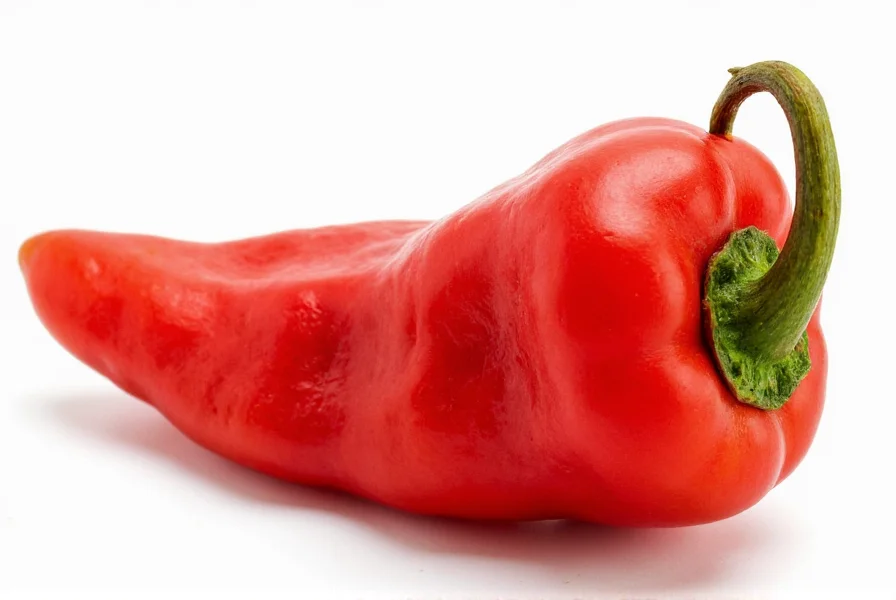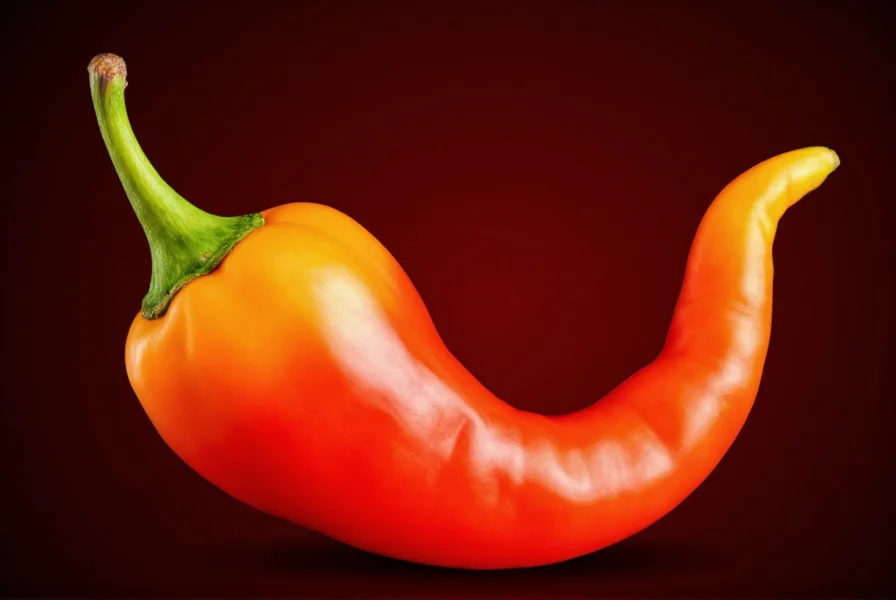The current holder of the world's hottest pepper title is the Carolina Reaper, officially verified by Guinness World Records with an average Scoville Heat Unit (SHU) rating of 1,641,000. Developed by South Carolina breeder Ed Currie, this pepper consistently measures between 1,400,000–2,200,000 SHU, making it approximately 275 times hotter than a jalapeño.
Understanding which pepper claims the title of world's hottest pepper 2024 requires examining scientifically verified measurements rather than anecdotal claims. The Carolina Reaper maintains its official status as the hottest pepper recognized by Guinness World Records, though newer contenders like Pepper X have emerged with potentially higher heat levels that lack official certification.
Measuring Pepper Heat: The Scoville Scale Explained
The Scoville Organoleptic Test, developed by pharmacist Wilbur Scoville in 1912, remains the standard for measuring chili pepper heat. This method determines how much sugar water is needed to dilute a pepper extract until its heat becomes undetectable to human testers. Modern laboratories now use High-Performance Liquid Chromatography (HPLC) for more precise measurements, converting capsaicinoid concentrations into Scoville Heat Units (SHU).
When discussing the hottest pepper comparison, it's crucial to understand that heat levels can vary significantly based on growing conditions, soil composition, and climate. Even within the same plant, individual peppers may show considerable variation in their SHU ratings.

The Carolina Reaper: Characteristics and Origins
Bred by Ed Currie of the PuckerButt Pepper Company in South Carolina, the Carolina Reaper (Capsicum chinense) is a cross between a Pakistani Naga pepper and a Red Habanero from St. Vincent. Its distinctive appearance features a red, bumpy body with a characteristic stinger-like tail.
The Carolina Reaper Scoville rating averages 1,641,000 SHU, with individual specimens reaching up to 2.2 million SHU. For context, this means the Carolina Reaper is approximately 275 times hotter than a typical jalapeño (2,500–8,000 SHU) and about 6 times hotter than a habanero (100,000–350,000 SHU).
Historical Context: Evolution of the World's Hottest Pepper
The title of world's hottest pepper has changed hands several times in recent decades as breeders have developed increasingly potent varieties:
| Pepper Variety | Years Held Record | Average SHU | Developer |
|---|---|---|---|
| Red Savina Habanero | 1994–2006 | 577,000 | GNS Spices |
| Bhut Jolokia (Ghost Pepper) | 2006–2011 | 1,041,427 | Assam, India |
| Trinidad Moruga Scorpion | 2012–2013 | 1,200,000 | Trinidad and Tobago |
| Carolina Reaper | 2013–present | 1,641,000 | Ed Currie (USA) |
Safety Considerations for Handling Super-Hot Peppers
Working with the hottest pepper in the world requires serious precautions. Capsaicin, the compound responsible for pepper heat, can cause severe irritation to skin and eyes. Professional growers and handlers recommend:
- Wearing nitrile gloves (latex provides insufficient protection)
- Using safety goggles to protect eyes from accidental contact
- Working in well-ventilated areas to avoid inhaling capsaicin particles
- Avoiding touching face or other body parts while handling
- Having dairy products like milk or yogurt nearby to neutralize capsaicin if accidental contact occurs
If you're wondering how hot is the Carolina Reaper compared to other peppers, the experience typically begins with a sweet, fruity flavor that quickly transforms into intense burning that can last 20-45 minutes. Medical professionals warn that consuming extremely hot peppers can cause temporary health issues including stomach pain, sweating, and in rare cases, more serious complications.
Common Misconceptions About Super-Hot Peppers
Several myths persist about the world's hottest peppers that deserve clarification:
- Myth: The seeds contain most of the heat.
Fact: Capsaicin is primarily concentrated in the white pith (placenta) surrounding the seeds, not in the seeds themselves. - Myth: Drinking water helps alleviate pepper burn.
Fact: Water spreads capsaicin; dairy products containing casein (milk, yogurt) are far more effective at neutralizing the burn. - Myth: All super-hot peppers are bred solely for heat competition.
Fact: Many breeders aim for complex flavor profiles alongside heat, with applications in specialty hot sauces and culinary creations.
Practical Applications of Super-Hot Peppers
Despite their extreme heat, peppers like the Carolina Reaper have legitimate culinary and industrial applications. In small, carefully measured quantities, they contribute to specialty hot sauces prized for their complex flavor profiles. The pharmaceutical industry utilizes capsaicin for pain relief patches and topical analgesics. Law enforcement uses capsaicin derivatives in pepper sprays for non-lethal crowd control.
For home cooks interested in safest way to handle super hot peppers, experts recommend starting with minuscule amounts—a toothpick tip's worth—when experimenting with these extreme peppers in cooking. Always label containers clearly and keep them separate from regular cooking ingredients.
Future of Super-Hot Peppers
While the Carolina Reaper maintains its official status, breeders continue developing new varieties. Ed Currie's Pepper X has been unofficially tested at up to 3.18 million SHU, though it lacks Guinness certification. The quest for the hottest pepper 2024 continues, but many experts believe we may be approaching biological limits for capsaicin production in peppers.
Regardless of future developments, the Carolina Reaper remains the scientifically verified hottest pepper available to consumers today. Its combination of extreme heat, distinctive flavor profile, and official recognition solidify its position as the current champion of the super-hot pepper world.
Frequently Asked Questions
What is the exact Scoville rating of the Carolina Reaper?
The Carolina Reaper has an average Scoville Heat Unit (SHU) rating of 1,641,000, with individual specimens ranging from 1,400,000 to 2,200,000 SHU. This measurement was officially verified by Guinness World Records through laboratory testing using High-Performance Liquid Chromatography (HPLC).
How does the Carolina Reaper compare to the Ghost Pepper?
The Carolina Reaper is significantly hotter than the Ghost Pepper (Bhut Jolokia). While Ghost Peppers average around 1,041,427 SHU, Carolina Reapers average 1,641,000 SHU, making them approximately 60% hotter. The Carolina Reaper also has a more complex flavor profile with sweet and fruity notes before the intense heat sets in.
What should I do if I eat too much Carolina Reaper?
If you consume too much Carolina Reaper, immediately drink milk or eat yogurt, as the casein protein binds to capsaicin and helps remove it from pain receptors. Avoid water, which spreads the oil. Sugar or honey can also help neutralize the burn. If experiencing severe symptoms like difficulty breathing or persistent pain, seek medical attention. Prevention is key—always start with minuscule amounts when working with super-hot peppers.
Is Pepper X officially recognized as the world's hottest pepper?
No, Pepper X is not officially recognized as the world's hottest pepper. While developer Ed Currie claims it measures up to 3.18 million SHU in unofficial tests, it has not been submitted for or received verification from Guinness World Records. The Carolina Reaper remains the officially recognized hottest pepper with its 1,641,000 SHU average rating verified by Guinness.
Can growing conditions affect a pepper's heat level?
Yes, growing conditions significantly impact a pepper's heat level. Factors including soil composition, climate, water stress, and sunlight exposure can cause variations of 20-30% in Scoville ratings even within the same plant. This is why official heat measurements require multiple specimens grown under controlled conditions to determine an accurate average rating.











 浙公网安备
33010002000092号
浙公网安备
33010002000092号 浙B2-20120091-4
浙B2-20120091-4